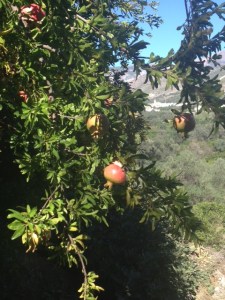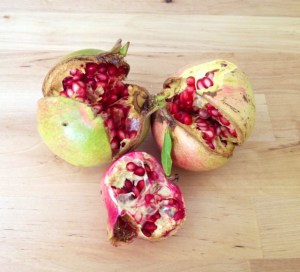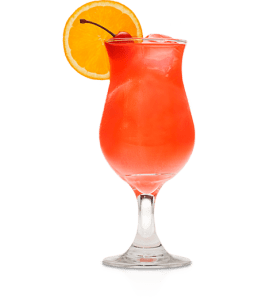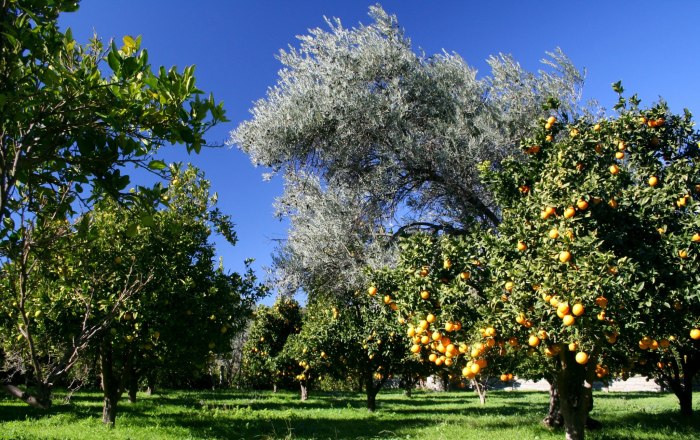Happy New Year! We’ve had a bit of a cold snap in the Lecrin Valley over the last week, with a very cold wind coming down off the mountains and some rain. Down in the valley that’s not particularly brilliant, but it’s fantastic news for skiers up in the Sierra Nevada (our area of fabulous skiing (less than an hour from the Valley) where the snow is great, with more to come!
Continue reading “Enjoy the snow – there’s heaps on the Sierra Nevada!”Tag: Sierra Nevada
A guide to the festive season in Spain
The Holidays are Coming – here’s reblog of At Home in Andalusia’s useful guide to the festive season in Spain…
December and January is full of fiestas and special days in the Spanish calendar… here’s At Home in Andalusia’s run-down to help you enjoy the holiday season.
http://athomeinandalucia.blog/2020/12/03/the-holidays-are-coming-a-guide-to-the-festive-season-in-spain/
— Read on athomeinandalucia.blog/2020/12/03/the-holidays-are-coming-a-guide-to-the-festive-season-in-spain/
Sierra Nevada – not just for winter!
The beautiful Sierra Nevada in the Granada Province is one of the best mountain regions in Spain, if not THE best! Not just for winter pursuits, the Sierra Nevada, which is just a short drive from the Lecrin Valley, is also a great place to visit in the summer, with loads of activities from hiking, cycling, snow melt watching, waterfall jumping and much more! Continue reading “Sierra Nevada – not just for winter!”
Winter walks in the Lecrin Valley
Winter is an amazing time to get walking in the Lecrin Valley. Whether you consider yourself a walking pro, weekend rambler or Sunday stroller, there’s a walk for you, and there’s no better way to see this amazing part of Spain than to get out amongst it in a comfy pair of trainers or walking boots.
The winter has been so mild, but there is still snow on the sierras, so you can basically walk through snow on the high ground, down to warm blossom filled orchards in the lower parts of the valley.
The almond blossom is now out and will shortly be followed by orange blossom from the hundreds of orchards around the area, so the air is filled with a gorgeous, sweet aroma and the scenery peppered with a light pink haze from the thousands of almond trees.
It’s a truly beautiful time of year and one where you get to really appreciate the beauty and contrasting elements of this amazing corner of Spain.
The following websites have great walks planned out for you that can be downloaded.
http://www.treksierranevada.com/walks/start-point/lecrin-valley
http://www.spanishhighs.co.uk/lecrin-valley-walking-tours.php
Or if you’re a local and want to get into walking regularly, then The Lecrin Valley Limpers has walks every weekend. http://lecrinlimpers.blogspot.co.uk or ask to join the Facebook Group at https://www.facebook.com/groups/lecrinvalleylimpers. Members only.
If you want to get higher up into the Sierra Nevada, then contact Mike at Sierra Nevada Guides: http://sierranevadaguides.co.uk (based in Lanjaron).
Happy walking.
Winter in the Lecrin Valley: crisp blue sky days and warm sunshine
If you’re looking for some warm winter sun and crisp blue sky days, but prefer incredible scenery to sun-baking and love walking and a bit of skiing, then this is a great time of year to visit the Lecrin Valley. It’s also a great time to visit the Alhambra and the rest of Granada without all the busloads of tourists.
There isn’t a huge amount of rain over the winter in the Lecrin Valley, not that you need much with the acequias running full pelt most days, but just enough, with plenty of water coming off the mountains to water the orchards and it’s amazing just how much fruit and orchard goings-on there is at this time of year.
You’ll still find a lot of fruit on trees too – plenty of oranges (our grapefruit and navel oranges hung on well into February), and it’s quickly mixed with new blossom for the next lot of fruit – citrus trees are very busy all year round! The Lecrin Valley becomes filled with that amazing sweet pungent scent of the “azahar” (official spanish name for the white flowers of the various citrus fruits).
In January, the whole valley is transformed again with the Almond Blossom. From white to pink, the blossom colours the entire landscape giving it a sort of pinky haze. And despite the sometimes ferocious wind, the little flowers manage to hang on well into February.
It’s an amazing smell and just when you think the trees have lost all their leaves and life for the winter they burst full of pretty pink and white flowers again.
Continue reading “Winter in the Lecrin Valley: crisp blue sky days and warm sunshine”
Full of Fruity Goodness: Produce of the Lecrin Valley
The Lecrin Valley is a wonderful place, rich in history and primarily an area devoted to fruit. All over the place you’ll find old and existing mills, factories for frutos secos (nuts) and of course citrus orchards and olive groves as far as the eye can see.
Sadly over recent times with the recession and reduction in the price of oranges, the Lecrin Valley has taken a huge hit as far as its primary product is concerned. Almost all the locals sell to the local cooperative and are currently getting extremely low rates for their oranges, so many of them have just given up, because it’s not even worth them getting in the seasonal workers to help with the harvest.
Consequently you see orchards full of unpicked oranges and lemons just rotting on the ground. But the locals are still very proud of their orange tradition and every year at the end of March/beginning of April there’s a special festival devoted to the local citrus heritage – Feria de los Citricos – which this year runs from 23 – 30 March. This takes place in Melegis, the heart of Orange country and where the cooperative is located.
Aside from the oranges and lemons, almonds and olives, there’s a huge variety of other sorts of fruits: Pomegranates, custard apples, figs, nisperos, caquis (persimmon or “Sharon” fruit), avocadoes, grapefruit, cactus fruit and apparently even some mangoes.
Lots of these fruit trees are roadside, so you don’t have to pay for them anyway. You simply gather what you need on your daily walk! This definitely keeps a lot of the locals going. Most of the locals grown their own vegetables in their own “huertos” or “huertas” (huertas can be translated as orchards or vegetable gardens or even “allotment”). You can even find a lavender plantation in Restabal at Casa Lavanda.
The climate is pretty mild with the exception of a couple of cold months in January and February, and although the valley is surrounded by snow-capped hills and mountains, it rarely gets frost or snow itself. So the locals have a huge repertoire in fruit and veg in their gardens, huertos and even just on balconies – all kinds of peppers and chillis, root veg, tomatoes, judías (runner beans) and all sorts of other leafy veggies. They also almost all have a grape vine or two over a roof terrace or balcony. You could pretty much be self-sufficient and survive without spending a centimo on fruit and veg, just by foraging!
As well as fruit, there are also many herbs to be found lining roadsides and up in the hills on the way up to the neighbouring Alpujarras, including wild mint, basil, loads of rucola (rocket), rosemary and thyme. And the Alpujarras is also famous for its goats cheese and hams.
Some of the best ham in Spain comes from up in Trevelez. Trevélez (the second highest muncipality in Spain) is famous for the quality of its air-cured hams, a speciality throughout the Alpujarras, but particularly associated with the village, because the cold climate due to its altitude makes ideal conditions for storing them.
Honey is also a big product of the area – there is some in Lecrin, but mainly up in the hills of the Alpujarras and the Sierra Nevada. There’s even a honey museum in Lanjaron.
Local residents are well versed in making their own jams, marmelades, preserves etc and sun-drying peppers and tomaties and there are a few great companies sprouting up, like Almond & Olive who are exporting the Lecrin Valley’s fabulous fayre abroad, as well as the not for profit organisation Eco Valle that brings together all the local eco-friendly producers in the area.
To see some of the local producers in action you can either hang out around the orchards in harvest time, or some of the producers and mills run tours – like the Hacienda Senorio de Nevada vineyard near Conchar and Olive Oil Tours in Niguelas and La Flor De Las Alpujarras in Orgiva, an organic olive oil cooperative. Several local businesses, such as Casa Amelia and rural hotels also offer cooking classes and catering with local produce.
Of course if you really want to see what’s on offer, just go to the local markets – the best being in Niguelas, Padul, Durcal, Lanjaron and Orgiva.Whatever your tastes you won’t go hungry in the Lecrin Valley. See what you can find on a walk around the area. You’re sure to come back with a basket full of goodies, perfect for juicing, salads, preserves and garnishes and if you don’t find what you need the little vans that travel around the villages on a daily basis are sure to have it!
Buen provecho!
LECRIN VALLEY IS…
In case you don’t know the Lecrin Valley, here you go… this is what the LECRIN VALLEY is all about!
Lemons and Limes – they’re everywhere. They’re not as obvious as their brighter cousins, the oranges, but they’re in most orchards and by roadsides. Your gin & tonic will never be without this very important garnish!
Easygoing and Everything you need for a great holiday or a rural retreat. Close enough to the coast and to Granada city to feel connected and be able to take in the sights and do some shopping if you like, but far away from the hustle and bustle of city life to feel like you’re away from it all.
Creativity – there’s so much going on here if you take the time to look. Local artisans make jewellery, ceramics and rugs; there are artists and writers, photographers, musicians, actors and much much more.
Riding and Rambling! The area is hugely popular with on and off-road cyclists, horseriders, walkers and twitchers too.
Inspiring – when you spend time here you can’t help but be inspired by the beauty of the landscape and the easy pace of life.
Naranjas! This is one of biggest orange producing areas of Spain. They’re all over the place, pretty much all year round. Also Nisperos (date plums) – one of the local fruits, this little orange plum-like fruit is sort of half date half, plum in taste. The wasps and bees love them too!
Views – incredible views up to the mountains and down through the valley. Every direction you look there’s a staggering view – either of the Beznar dam to the south, the Sierra Nevada to the North, The Alpujarras and windmills to the East and West.
Almendras y Aceitunas (Almonds and Olives). The valley is full of blossom at least twice a year (April and November) for the oranges and lemons and in January the Almond blossom arrives. The olive harvest is in the winter. And not forgetting Alpujarra – The Lecrin Valley is on the doorstep of this amazing area of beautiful landscape and pretty mountain villiages.
Lavanda (lavender in Restabal). Not really known for its Lavender, the new lavender farm in Restabal (Casa Lavanda) hopes to make Lavender as much a part of the valley as oranges and almonds.
Lovely Villages and Lush Landscape – you can’t beat the greenery of the Lecrin Valley – so different to most of Andalucia – and the pretty white villages are some of the loveliest in Spain.
Embalsa de Beznar (the Beznar reservoir and dam). The main landmark of the valley. The Beznar reservoir and dam is an amazing strip of bright turquoise water surrounded by orchards and pine forest. It feeds off the springs and snow melt of the Sierra Nevada. Great for fishing and non-motorised watersports (but not swimming), the lake really is not used enough.
YES please! See you soon.
All about aprons!
Fiestas and now Fashion!
Oranges, lemons & life in Chite
When you set foot in the Lecrin Valley, you don’t immediately think fashion, but there’s a very talented designer here who has come up with some beautiful designs for jewellery and… aprons!
Yes, aprons! Not the first thing that springs to mind when you think fashion, and Lala (aka Ema de Haro, a French born artist, blogger and translator living in Durcal) has designed many different things to date, but her beautiful apron designs are proving to be a massive hit with not only the locals, but also international customers and recently she hosted a fashion show for her new collection.
The fashion show was held in the main house of the Thai Elephant restaurant in Restabal, thanks to its owner, Clive and with the participation (as one of the models!) of its manager, Natasha.
A good crowd of Lecrin Valley residents were there to give Lala their support and…
View original post 159 more words
All hail the Pomegranate, official symbol of Granada
Everywhere you go in Granada you see pomegranate imagery: in drawings and paintings; on signs, pottery; as statues, fountains and imbedded into pavements and roads.
 The pomegranate or Punica granatum, is “granada” in Spanish and the official motif or “heraldic symbol” of the city.
The pomegranate or Punica granatum, is “granada” in Spanish and the official motif or “heraldic symbol” of the city.
“Granada” also means grenade or hand grenade. I guess they do look a bit similar. And when thrown against the pavement or a concrete wall they both explode in a quite spectacular way!
When you visit Granada you see that all the street signs have a painting of the fruit on the top of them. The pomegranate motif even adorns the sewer manhole covers! Once you train your eye to the pomegranate, you’ll find it everywhere.
 The fruit season for the pomegranate in the Northern Hemisphere is now – between September and February, so at this time of year the “granadas” are along every road and trackside both town and country, bursting on the trees and spilling all their juicy red seeds over the ground.
The fruit season for the pomegranate in the Northern Hemisphere is now – between September and February, so at this time of year the “granadas” are along every road and trackside both town and country, bursting on the trees and spilling all their juicy red seeds over the ground.
Originally from the Middle East (Iran specifically), the pomegranate has been cultivated all over Asia and the Middle East since ancient times. It found its way to Europe via the spice routes and was introduced into the “New World” of Latin America and California by Spanish settlers in 1769.
The name pomegranate derives from medieval Latin pōmum “apple” and grānātum “seeded” and has influenced the common name for pomegranate in many languages (e.g. Granatapfel or Grenadine in German, grenade in French, granatäpple in Swedish, pomogranà in Venetian).
Noone is really sure but it seems that the old French word for the fruit, pomme-grenade, influenced its name in early English as “apple of Grenada”. Although the original name of the city of Granada (derived from Arabic), Gárnata, the Moors named the city after the pomegranate later on. Gárnata became Granada and the city adopted the pomegranate as its official symbol or motif.
 Between the size of a lemon and a grapefruit, this abundant, juicy, versatile and highly nutritious fruit is used for all sorts of different things, both culinary and medicinal. Pomegranate juice has had several rounds of being “in” in terms of a nutritious drink. It’s both sweet and sour a bit like raspberry juice; the sour coming from the acidic tannins in the juice of the arils (the seed casings).
Between the size of a lemon and a grapefruit, this abundant, juicy, versatile and highly nutritious fruit is used for all sorts of different things, both culinary and medicinal. Pomegranate juice has had several rounds of being “in” in terms of a nutritious drink. It’s both sweet and sour a bit like raspberry juice; the sour coming from the acidic tannins in the juice of the arils (the seed casings).
The exact number of seeds in a pomegranate can vary from 200 to about 1400 (contrary to some beliefs that all pomegranates have exactly the same number of seeds) and each seed has a surrounding water-laden pulp, ranging in color from white to deep red or purple. The seeds or Arils are all edible and actually the one part of the fruit that is high in fibre as well as vitamin C, B5 and potassium.
 If you like cocktails you’re probably familiar with Grenadine syrup, which is thickened and sweetened pomegranate juice and used as the red component in cocktails like the Tequila or Vodka Sunrise, Mai Tai and the revolting but very popular on Stag parties, Brain Hemorrhage shot (Baileys, Peach Schnapps and Grenadine).
If you like cocktails you’re probably familiar with Grenadine syrup, which is thickened and sweetened pomegranate juice and used as the red component in cocktails like the Tequila or Vodka Sunrise, Mai Tai and the revolting but very popular on Stag parties, Brain Hemorrhage shot (Baileys, Peach Schnapps and Grenadine).
Grenadine is also used in lots of sauces, particularly in Arabic cuisine, such as fesenjān, a thick sauce made from pomegranate juice and ground walnuts, usually spooned over duck or other poultry and rice, and in ash-e anar (Persian pomegranate soup).
Wild pomegranate seeds are used as a spice known as anardana (from Persian: anar + dana, pomegranate + seed). They have to be dried for about 10-15 days and then crushed so they don’t get stuck in your teeth, but the dried husky seeds are also used in things like Trail Mix, granola bars and on salads or in yogurts and on icecreams.
From a health point of view the pomegranate has spawned many a slimming and detox fad over the years as it’s high in anti-oxidants, with brands such as POM becoming fashionable supermarket juices. But of course it’s been used for its natural health benefits for centuries and is popular in Ayurvedic medicine.
In India the rind of the fruit and the bark of the pomegranate tree is used as a traditional remedy against diarrhea, dysentery and intestinal parasites. The seeds and juice are considered a tonic for the heart and throat, and classified as a bitter-astringent (pitta or fire) component under the Ayurvedic system, and considered a healthful counterbalance to a diet high in sweet-fatty (kapha or earth) components.
The astringent qualities of the flower juice, rind and tree bark are considered valuable for a variety of purposes, such as stopping nose bleeds and gum bleeds, toning skin (after blending with mustard oil), firming-up sagging breasts and treating hemorrhoids!
Pomegranate juice (of specific fruit strains, so don’t try this at home) is also used as eye-drops as it is believed to slow the development of cataracts.
 Pomegranate and pomegranate juice Researchers at the University of California, Riverside also identified components in pomegranate juice that both inhibit the movement of cancer cells and weaken their attraction to a chemical signal that promotes the metastasis of prostate cancer to the bone. No wonder the old Spanish men are often to be seen chewing on pomegranate seeds by the roadside. They’ve probably known about this for centuries.
Pomegranate and pomegranate juice Researchers at the University of California, Riverside also identified components in pomegranate juice that both inhibit the movement of cancer cells and weaken their attraction to a chemical signal that promotes the metastasis of prostate cancer to the bone. No wonder the old Spanish men are often to be seen chewing on pomegranate seeds by the roadside. They’ve probably known about this for centuries.
 Who knows the real medicinal qualities of the pomegranate, but at the very least, with all the granadas, caquis, oranges, lemons and limes around this area, noone in the Granada province will ever suffer from scurvy.
Who knows the real medicinal qualities of the pomegranate, but at the very least, with all the granadas, caquis, oranges, lemons and limes around this area, noone in the Granada province will ever suffer from scurvy.
Sophie Cross @ CasaCallistemon




















